Plumed Snake Medicine
The Trail of the Spanish Horse
Other
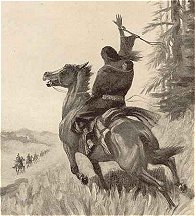 With
the Indians in the Rockies 1911/1912/1925 Each chapter begins
with a small black and white illustration. There are four color plates. With
the Indians in the Rockies 1911/1912/1925 Each chapter begins
with a small black and white illustration. There are four color plates.
Blackfeet Tales from Apikuni's
World
Blackfeet Tales of Glacier
Park
My
Life As an Indian: The Story of a Red Woman and White Man in the Lodges
of the Blackfeet
Why Gone Those Time?: Blackfoot
Tales
My Life As An Indian: The
Story of a Red Woman and and a White Man in the Lodges of the Blackfeet,
illustrated with photos by George Bird
Grinnell, Doubleday, 1907
With the Indians in the
Rockies, illustrated by George Varian, Houghton, 1912
Sinapah, the Indian Boy,
Houghton, 1913
The Quest of the Fish-Dog
Skin, illustrated by George Varian, Houghton, 1913
On the Warpath, illustrated
by George Varian, Houghton, 1914
Apauk, Caller of Buffalo,
Houghton, 1916
Blackfeet Tales of Glacier
National Park, Houghton, 1916
The Gold Cache, illustrated
by Geo;rge Varian, Houghton, 1917
Bird Woman (Sacajawea),
the Guide of Lewis and Clark, Houghton, 1918
Lone Bull's Mistake: A Lodge
Pole Chief Story, illustrated by George Varian, Houghton, 1918
Rising Wolf, the White Blackfoot:
Hugh Monroes's Story of His First Year on the Plains, illustrated by Frank
E. Schoonover, Houghton, 1919
Running Eagle, the Warrior
Girl, Houghton, 1919
The Dreadful River Cave:
Chief Black Elk's Story, illustrated by Harold Cue, Houghton, 1920
In the Great Apache Forest:
The Story of a Lone Boy Scout, Houghton, 1920
The War-Trail Fort: Further
Adventures of Thomas Fox and Pitamakan, illustrated by George Varian, Houghton,
1921
Siezer of Eagles, illustrated
by F. E. Schoonover, Houghton, 1922
The Trail of the Spanish
Horse, illustrated by George Varian, Houghton, 1922
Friends of My Life as an
Indian, Houghton, 1923
Plumed Snake Medicine, illustreated
by Frank E. Schoonover, Houghton, 1924
Sahtaki and I, Houghton,
1924
Questers of the Desert,
illustrated by Frank E. Schoonover, 1925
William Jackson, Indian
Scout: His True Story Told by His Friend, Houghton, 1926
Signposts of Adventure:
Glacier National Park As the Indians Know It, Houghton, 1926
Sun Woman: A Novel, Houghton,
1926
Red Crow's Brother: Hugh
Monroes Story of His Second Year on the Plains, illustrated by F. E. Schoonover,
Houghton, 1927
A Son of the Navahos, Houghton,
1927
In Enemy Country, Houghton,
1928
Skull Head the Terrible,
illustrated by R. E. Schoonover, Houghton, 1929
The Sun God's Children,
with Jessie Louise Donaldson, illustrated by Winold Reiss, Houghton, 1930
The White Beaver, illustrated
by Rodney Thompson, Houghton, 1930
Alder Gulch Gold, illustrated,
by Albin Henning, Houghton, 1931
Friends and Foes in the
Rockies, illustrated by Stockton Mulford, Houghton, 1933
Gold Dust, illustrated by
Stockton Mulford, Houghton, 1934
The White Buffalo Robe,
illustrated by R. E. Schoonover, Houghton, 1936
Stained Gold, illustrated
by F. E. Schoonover, Houghton, 1937
Short Bow's Big Medicine,
illustrated by Stockton Mulford, Houghton, 1940
Why Gone Those Times? Blackfoot
Tales
James Willard Schultz first
encountered the Blackfeet Indians in Montana Territory in 1877 when
he was seventeen. In time, he married a Blackfeet woman, formed
close friendships with many in the tribe, and lived with them off and on
for the next seventy years until his death. Why Gone Those Times? is based
on his experiences among the Blackfeet, who gave him the name Apikuni.
Apikuni’s adventures include taming a wolf, raiding in Old Mexico, and
stalking a black buffalo. Although Schultz was neither historian nor ethnologist,
he filled his stories with Indian history and detailed descriptions
of Blackfeet daily life and culture. James Willard Schultz wrote forty-four
books, including Blackfeet and Buffalo and Blackfeet Tales from Apikuni’s
World, both published by the University of Oklahoma Press. Eugene Lee Silliman
is a retired high school teacher living in Deer Lodge, Montana.
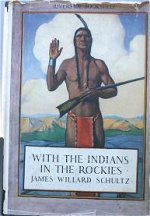 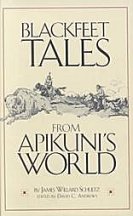 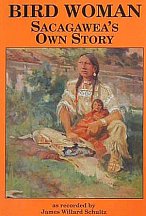 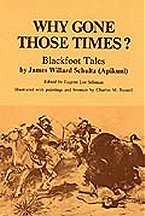
|
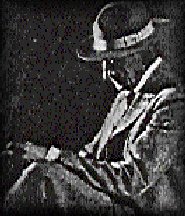 James
Willard Schultz (1859-1947) lived in and wrote about the northwestern
portion of Montana now included within the Blackfeet Reservation and Glacier
National Park. In 1877, at the age of 18, he traveled from his birthplace
in Boonville, New York to Fort Benton, Montana Territory. He became interested
in American Indians, and lived for many years with the Blackfeet Indians
as an accepted member of their nation. Drawing upon his experiences on
the western frontier he later wrote thrilling and colorful books and articles
to make his living as an author. His success was notable in his own time,
and many of his books remain in print. James
Willard Schultz (1859-1947) lived in and wrote about the northwestern
portion of Montana now included within the Blackfeet Reservation and Glacier
National Park. In 1877, at the age of 18, he traveled from his birthplace
in Boonville, New York to Fort Benton, Montana Territory. He became interested
in American Indians, and lived for many years with the Blackfeet Indians
as an accepted member of their nation. Drawing upon his experiences on
the western frontier he later wrote thrilling and colorful books and articles
to make his living as an author. His success was notable in his own time,
and many of his books remain in print.
James
Willard Schultz first came to Arizona to finish his first (and some
think, his best) book: "My Life As An Indian" (1907). For two years
(1905 - 1907), he lived and worked on the Pima Indian Reservation and during
that time helped in the excavation of Casa Grande. The hunting lodge of
Schultz was built in Greer in 1913 by John Butler. Butler was the husband
of "Aunt Molly" of Butler's Lodge fame, and father of Vince, longtime Round
Valley rancher-cattleman. James Willard Schultz was the first tourist to
build a cabin in this area, traveling 116 miles from the railroad in Holbrook
to get here...first by wagon and later by "taxi"! According to Schultz's
biographer Warren L. Hanna in "The Life and Times of James Willard Schultz
(Apikuni)":
Schultz had looked forward
to the time when he could own a mountain retreat where there was an abundance
of wildlife, including even grizzlies, and fabulous hunting...The site
selected by Schultz was a small open meadow beside the clear headwaters
of the Little Colorado River. It was surrounded by a veritable garden of
wild flowers, and there were countless butterflies everywhere. Schultz
aptly named it "Apuni Oyis," or Butterfly Lodge.
Schultz came to Greer a
middle-aged man, just beginning his second career: He wrote some 37 books
before he died at 88 in 1947. The books, many published in serial form
in both children's and adult magazines, were synonymous with adventure
in the American West. The local children could hardly wait for the next
installment in Youth's Companion, American Boy, Boy's Life, and Forest
& Stream. White Mountain pioneers remember the wonderful tale about
Molly Butler's teenagers by her first marriage: George and Hannah Crosby
and their WWI adventure as summer rangers under Apache Forest Supervisor
Fred Winn on Mount Thomas (later called Mt. Baldy) in In the Great Apache
Forest: The Story of a Lone Boy Scout, published in 1920. The author, from
a wealthy New York family, escaped a "West Point future" by boarding a
Missouri River steamboat in St. Louis and some 2,000 miles later arriving
at Ft. Benton, Montana Territory, in 1877. He fell in love with the country
and the Blackfoot Indians, later serving as a hunting guide, trapper in
the Glacier Pk. area, and fighter for Indian rights. By his first marriage
to a Blackfoot maiden, Natahki, in 1879, there was the son Hart Merriam
Schultz, known as Lone Wolf. |

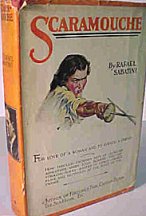
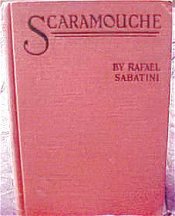
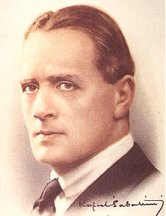 Rafael Sabatini
(1875-1950)
was raised in Italy, England, and Switzerland by his Italian father and
English mother, opera singers both. He moved to England in his teens and
began writing fiction. He became a British citizen to avoid subscription
into the Italian army during W.W.I. He later joined the British Secret
Service as a translator. Sabatini wrote for many years before obtaining
success with the novel Scaramouche (1921), a romantic historical tale of
fugitive aristocrat Andre Moreau set during the French Revolution. The
novel is swashbuckling good fun. Captain Blood (1922) was his other great
success. Sabatini published another 29 novels most of which are now out-of-print.
Most of his short stories remain uncollected. He died in Switzerland on
February 13, 1950. Sabatini's headstone is inscribed with the first words
from Scaramouche: "He was born with a gift of laughter and a sense that
the world was mad."
Rafael Sabatini
(1875-1950)
was raised in Italy, England, and Switzerland by his Italian father and
English mother, opera singers both. He moved to England in his teens and
began writing fiction. He became a British citizen to avoid subscription
into the Italian army during W.W.I. He later joined the British Secret
Service as a translator. Sabatini wrote for many years before obtaining
success with the novel Scaramouche (1921), a romantic historical tale of
fugitive aristocrat Andre Moreau set during the French Revolution. The
novel is swashbuckling good fun. Captain Blood (1922) was his other great
success. Sabatini published another 29 novels most of which are now out-of-print.
Most of his short stories remain uncollected. He died in Switzerland on
February 13, 1950. Sabatini's headstone is inscribed with the first words
from Scaramouche: "He was born with a gift of laughter and a sense that
the world was mad."
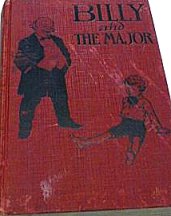
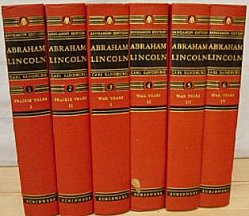
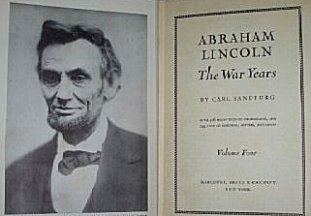
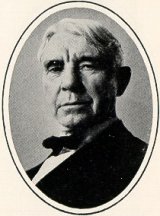
 With
the Indians in the Rockies 1911/1912/1925 Each chapter begins
with a small black and white illustration. There are four color plates.
With
the Indians in the Rockies 1911/1912/1925 Each chapter begins
with a small black and white illustration. There are four color plates.





 Wilderness Babies 1905
The stories of some of the baby mammals of the wilderness - how they grow
and learn day by day to take care of themselves. In hollow trees
or down under water among the lily leaves, in the cool sea or on the rugged
mountains, on the grassy plains or among the waving tree-tops, in the dark
caves and burrows or hidden in the tangles underfoot - all the world is
alive with young creatures.
Wilderness Babies 1905
The stories of some of the baby mammals of the wilderness - how they grow
and learn day by day to take care of themselves. In hollow trees
or down under water among the lily leaves, in the cool sea or on the rugged
mountains, on the grassy plains or among the waving tree-tops, in the dark
caves and burrows or hidden in the tangles underfoot - all the world is
alive with young creatures.
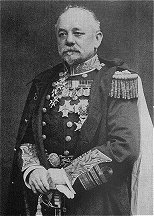
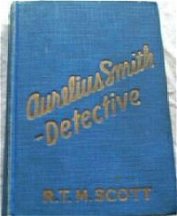
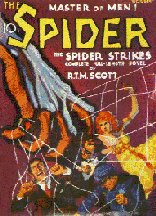
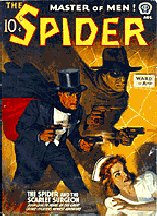

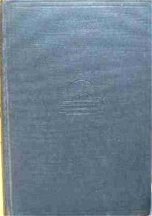
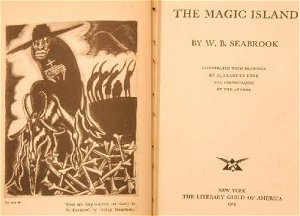

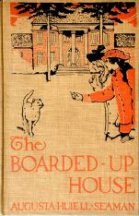
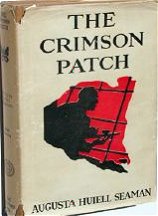
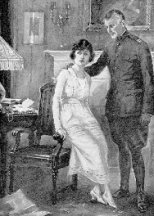
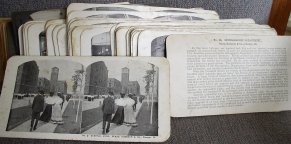
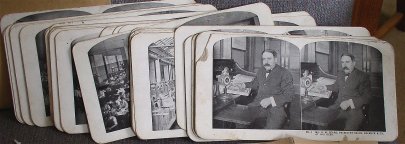
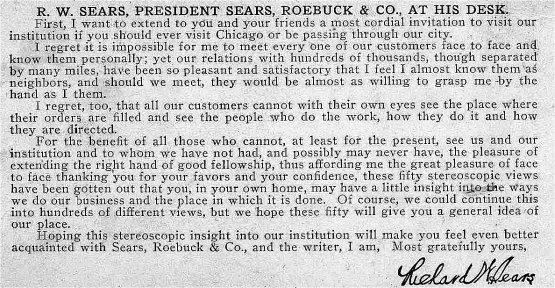
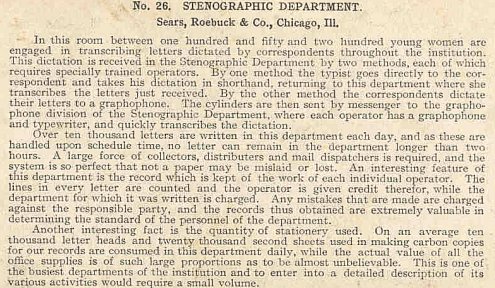
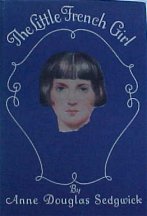 The Little
French Girl 1924
The Little
French Girl 1924
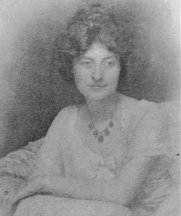
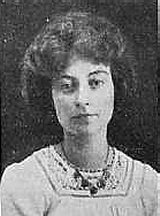 Born
on March 28, 1873, in Englewood, New Jersey, Anne Sedgwick lived
from the age of nine in London, where her father had business connections.
In 1898 a novel she had written for private amusement was, through her
father's efforts, published in London as The Dull Miss Archinard. The success
of that book led her to produce in rapid order The Confounding of Camelia
(1899), The Rescue (1902), Paths of Judgment (1904), The Shadow of Life
(1907), A Fountain Sealed (1907), Anabel Channice (1908), and Franklin
Winslow Kane (1910). Writing in much the same vein as Edith Wharton and
Henry James, Sedgwick contrasted the mores and morals of American and European
cultures. Tante (1911), her first major success, was a best-seller in the
United States. The Nest, a collection of stories (1912),
and The Encounter (1914) followed. During World War I Sedgwick and her
husband, essayist Basil de Sélincourt (whom she had married in 1908)
worked in hospitals and orphanages in France. After the war Sedgwick resumed
her writing, producing a nonfiction work, A Childhood in Brittany Eighty
Years Ago (1919), as well as several stories and novels, including The
Little French Girl (1924), another best-seller. In 1931, during
her last visit to the United States, she was elected to the National Institute
of Arts and Letters. After a lengthy illness she died in Hampstead, England,
on July 19, 1935.
Born
on March 28, 1873, in Englewood, New Jersey, Anne Sedgwick lived
from the age of nine in London, where her father had business connections.
In 1898 a novel she had written for private amusement was, through her
father's efforts, published in London as The Dull Miss Archinard. The success
of that book led her to produce in rapid order The Confounding of Camelia
(1899), The Rescue (1902), Paths of Judgment (1904), The Shadow of Life
(1907), A Fountain Sealed (1907), Anabel Channice (1908), and Franklin
Winslow Kane (1910). Writing in much the same vein as Edith Wharton and
Henry James, Sedgwick contrasted the mores and morals of American and European
cultures. Tante (1911), her first major success, was a best-seller in the
United States. The Nest, a collection of stories (1912),
and The Encounter (1914) followed. During World War I Sedgwick and her
husband, essayist Basil de Sélincourt (whom she had married in 1908)
worked in hospitals and orphanages in France. After the war Sedgwick resumed
her writing, producing a nonfiction work, A Childhood in Brittany Eighty
Years Ago (1919), as well as several stories and novels, including The
Little French Girl (1924), another best-seller. In 1931, during
her last visit to the United States, she was elected to the National Institute
of Arts and Letters. After a lengthy illness she died in Hampstead, England,
on July 19, 1935.







